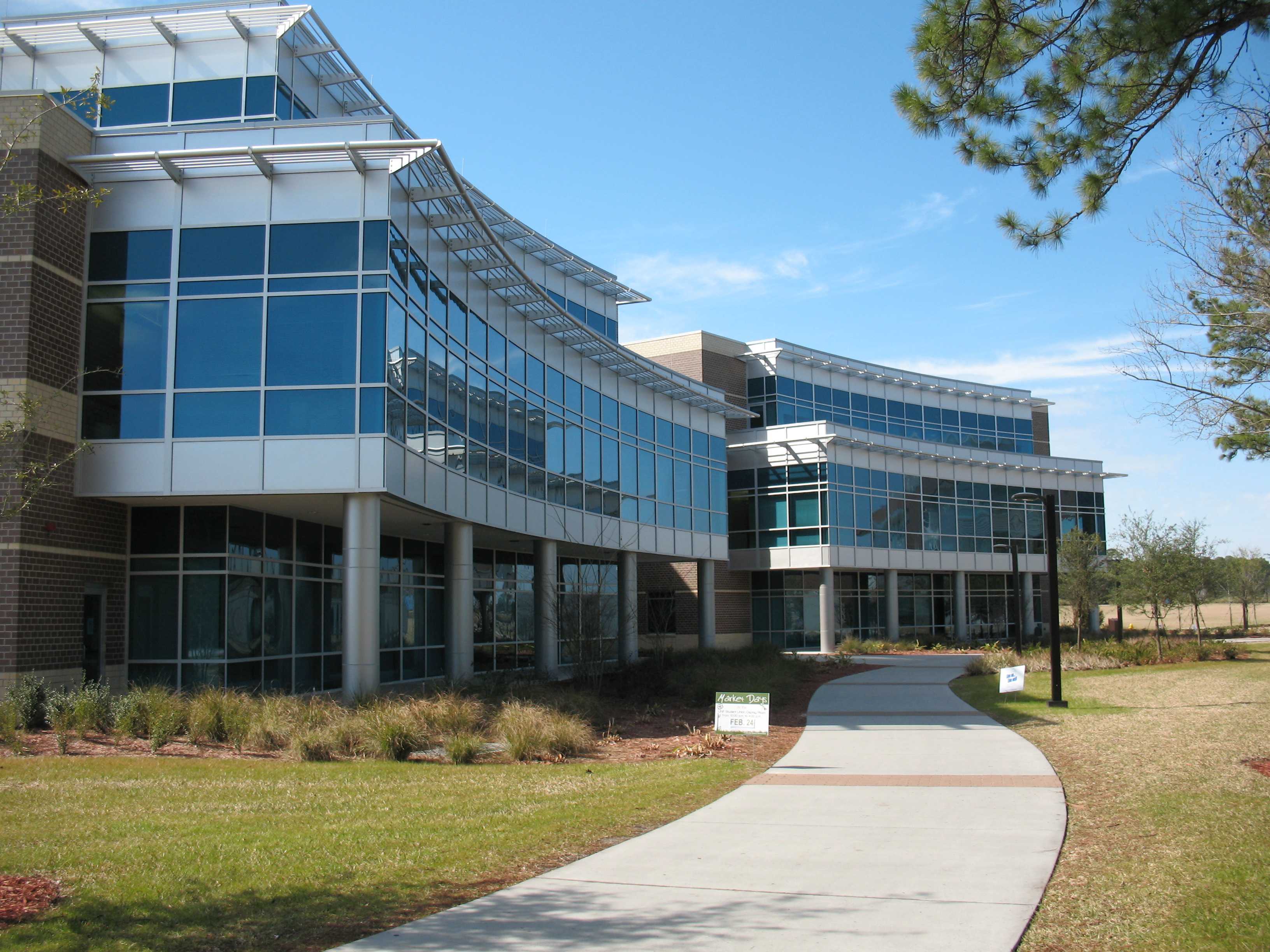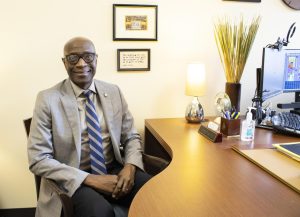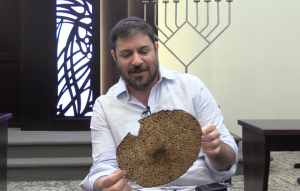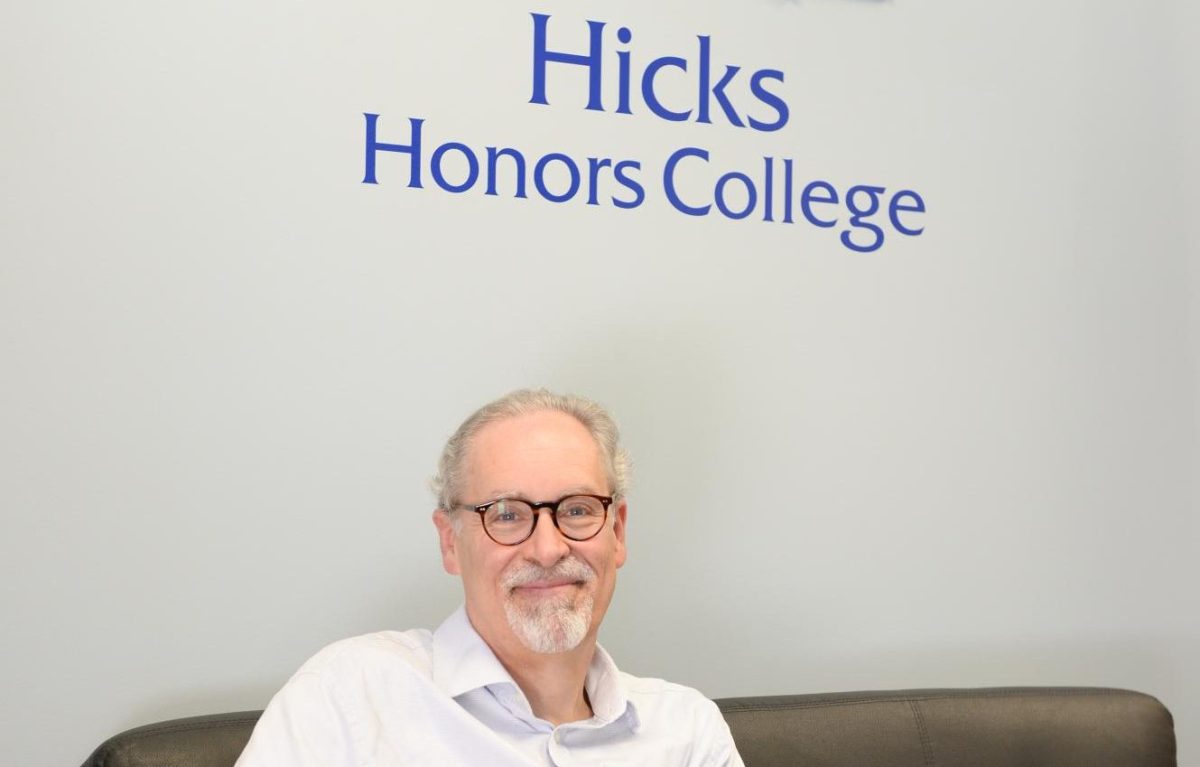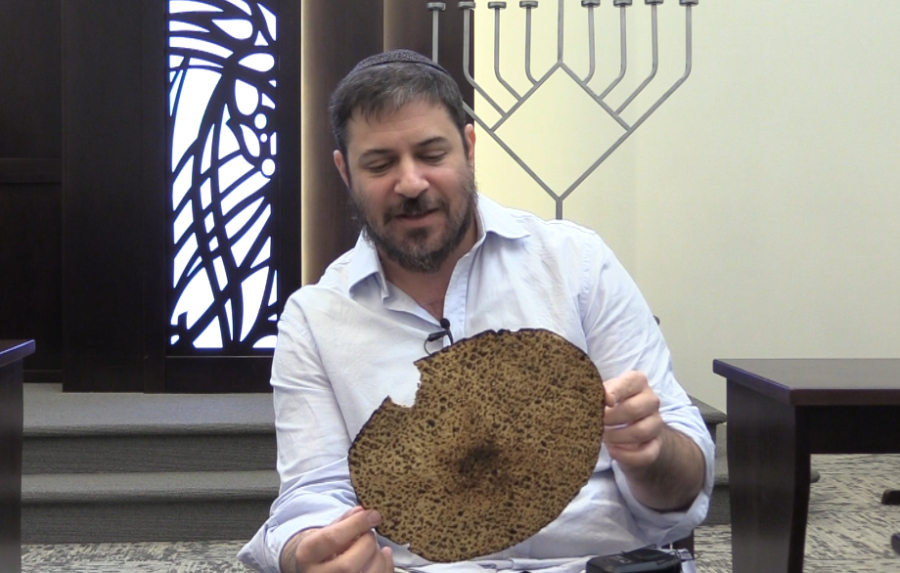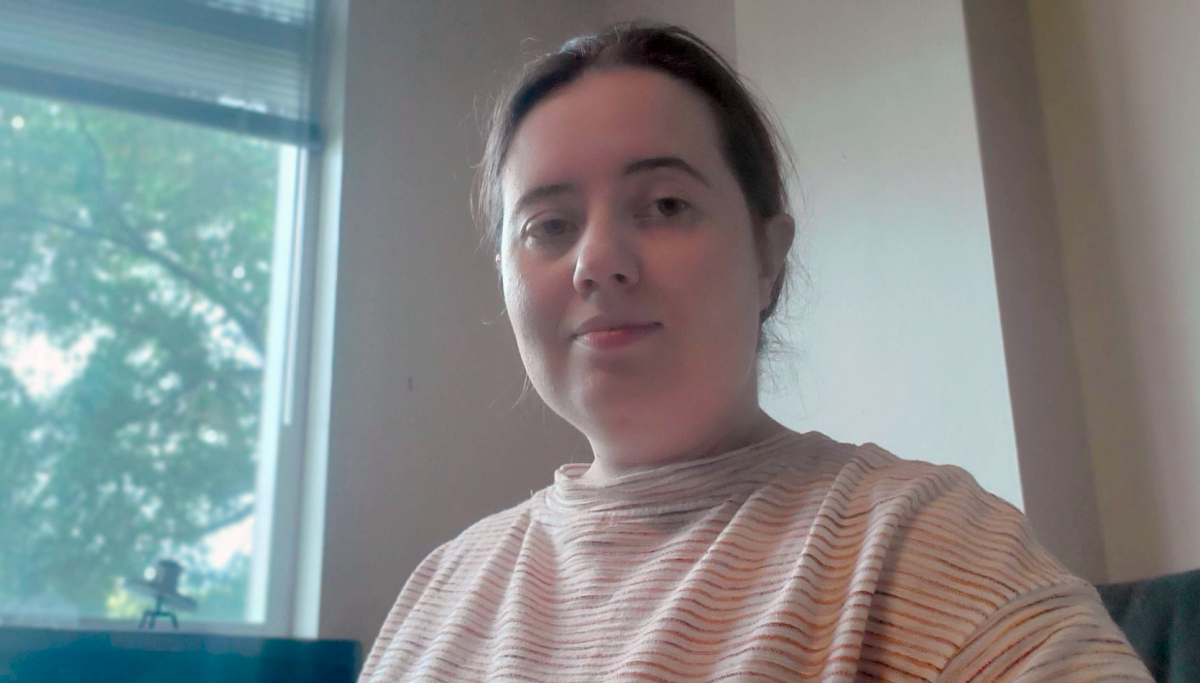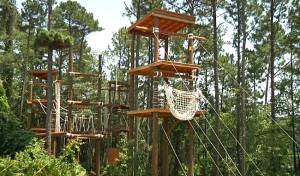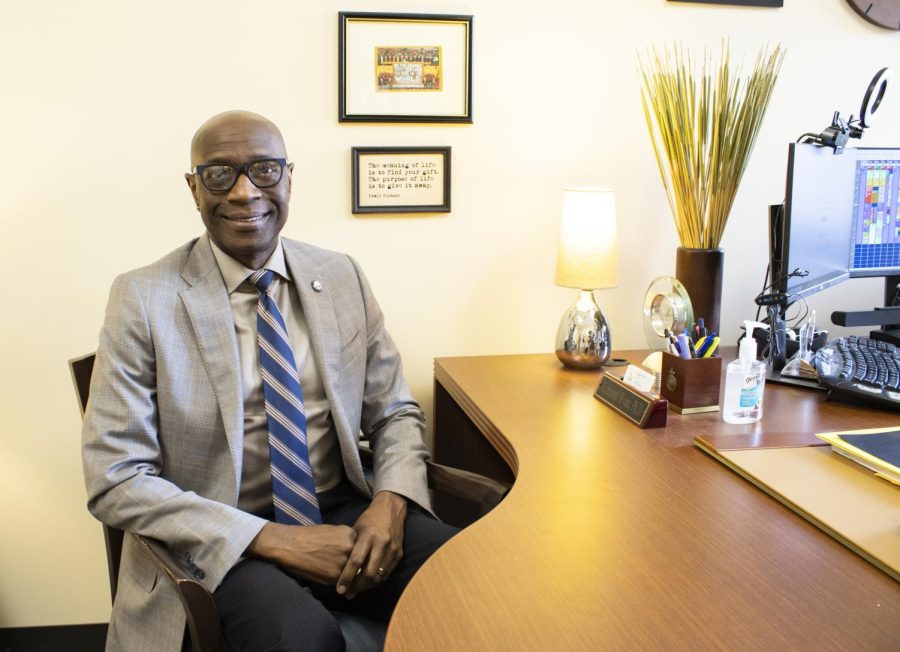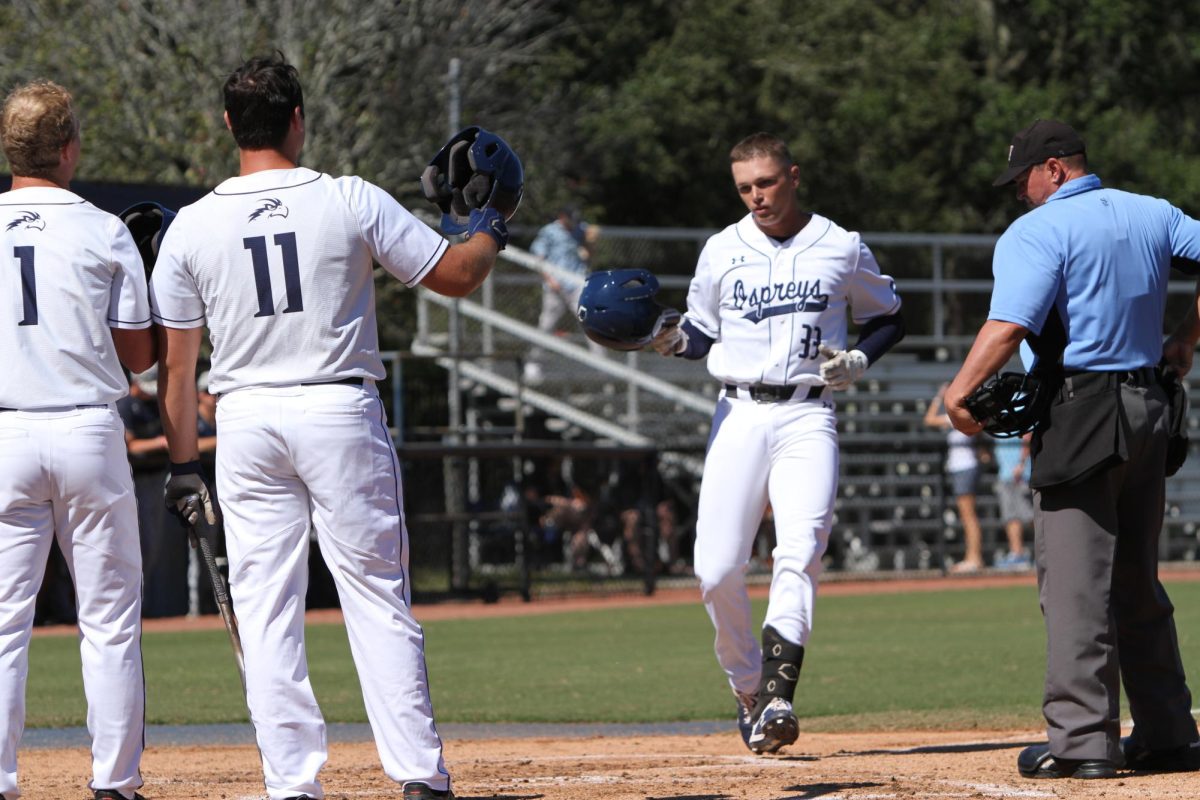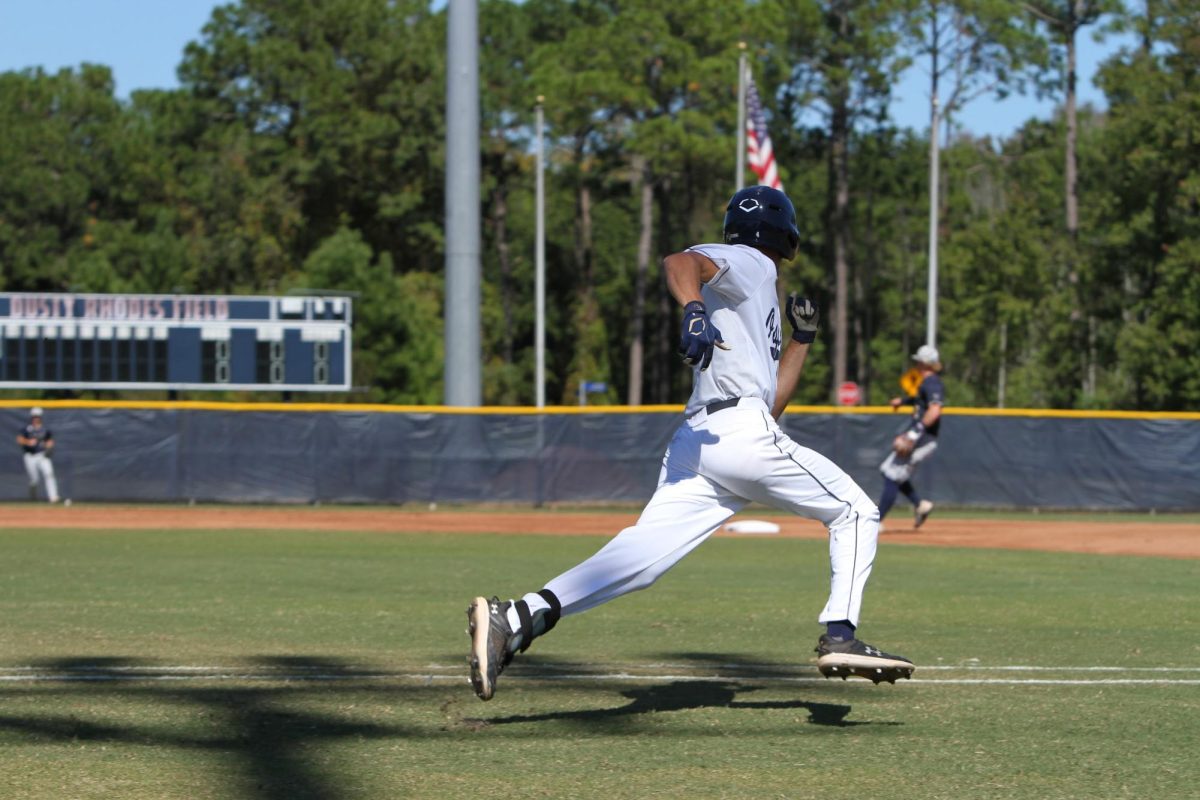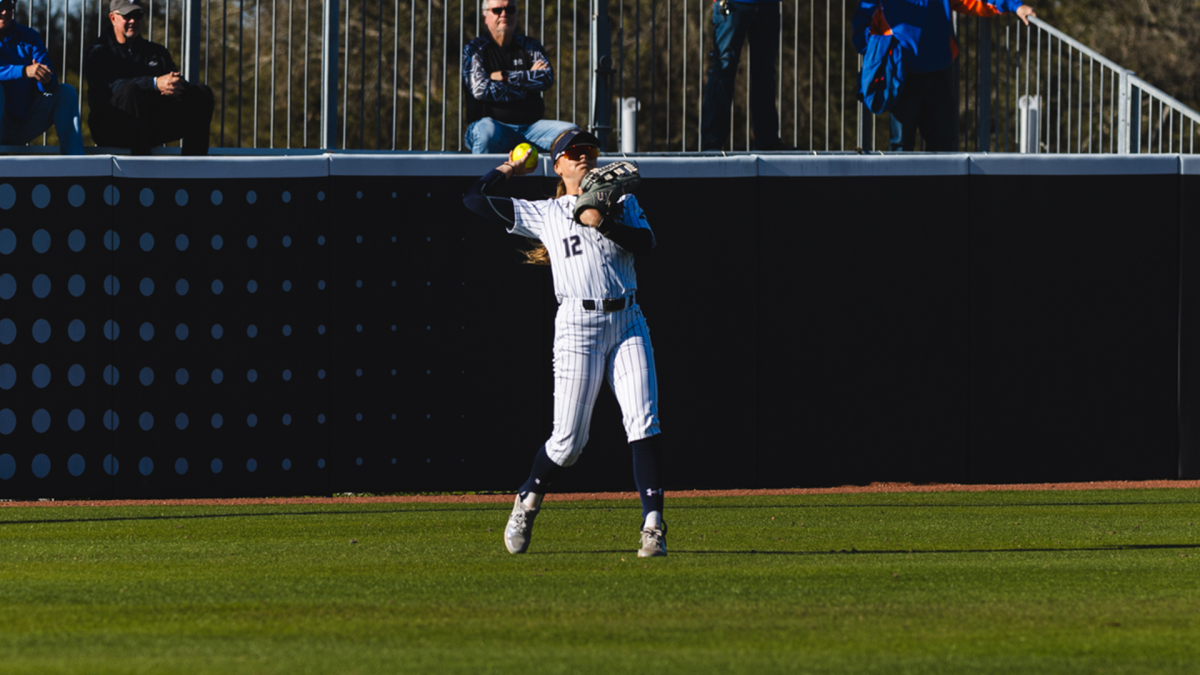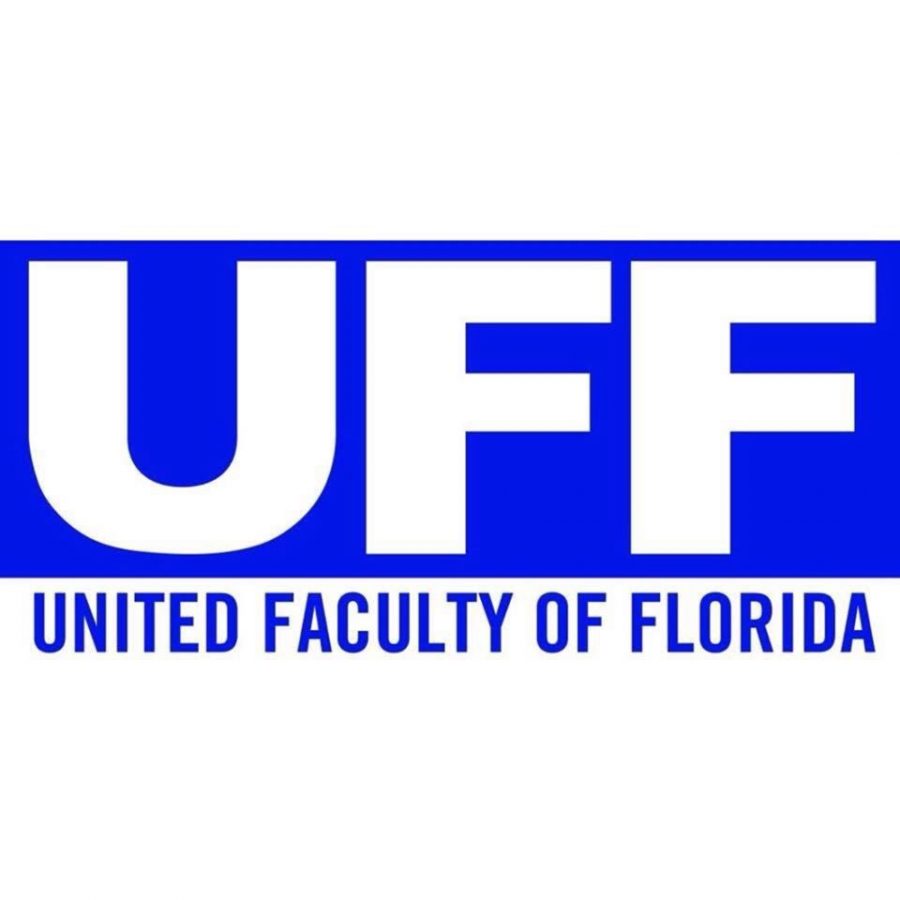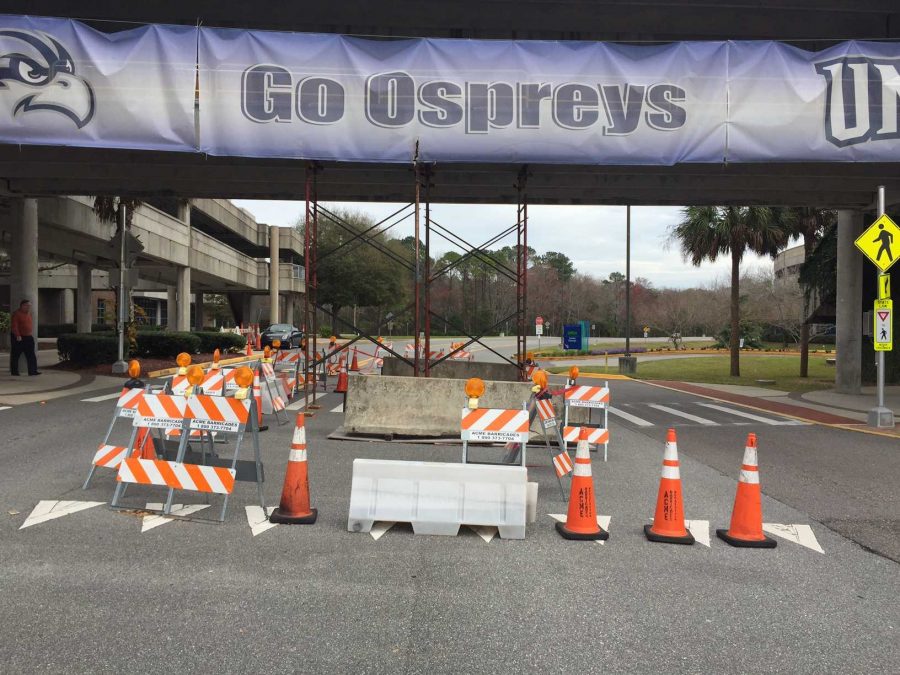UNF’s High Adventure Ropes Course is coming to students this fall in the pristine UNF Wildlife Sanctuary.
Dubbed the Osprey Challenge Course, this team-building exercise features low-element events on the ground and high-element events suspended in the air that will test students’ physical and mental limitations. UNF students have already paid for the roughly $250,000 course, with the costs included in their student taxes and fees.
“We’re not doing military, timed events,” said Ayolane Halusky, UNF Eco-Adventure coodinator and chief ranger for the UNF Wildlife Sanctuary and the UNF Department of Campus Recreation. “We’re breaking through perceptions of limitations that people think they have, which can be difficult when you’re 30-40 feet in the air.”
Halusky is running the course.
“This is not a canopy tour,” he said. “This is something bigger.”
Student Government currently only allows UNF students to use it, due in part to the ongoing training. Halusky, however, said the course may be open for nonstudents at some later date.
Sixteen of UNF’s SG officials, including Student Body Vice President Michael Naughton, tried the course out first.
Naughton said the staff at the OCC were some of the most talented individuals he had the opportunity work with, and it empowered the group to complete every obstacle thrown at it.
After stretching, signing liability waivers and working on different team-building initiatives, Naughton and his team spent the next four hours in the air.
Naughton said some people received scrapes and bruises but were able to walk away with memories and better skills.
Halusky met with Alpine Towers International owner Joe Lackey for the first site visit in 2007. After five more site visits, the location of the course was decided, and UNF contracted with ATI to build a recreational adventure.
“It was a pretty, wooded area that was chosen for aesthetics, as well as being able to accommodate the size of the structure,” said Kelly Hannah, marketing and operations specialist for ATI.
Halusky said most courses are out in flat, open areas. The OCC is unique in that it fits perfectly into its natural surrounding.
Hannah said ATI has built courses for many universities, and that UNF’s was one of the best courses it had helped build. He said the idea for UNF’s course is based off the Odyssey model but was substantially different.
The Odyssey model is designed for educational purposes with a focus on teamwork among small groups. Similar courses have recently been built at East Carolina University and Florida Gulf Coast University.
He said many of ATI’s courses are designed for a myriad of purposes, like Florida Institute of Technology’s course, which is designed for its ROTC program as a field leadership and reaction course. 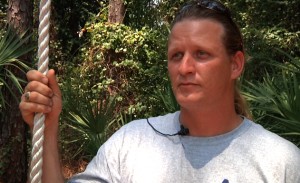
Other designs like UNF’s are outdoor, recreation programs for larger groups — to teach students about teamwork, trust, communication, problem-solving or strategic-thinking skills.
Hannah said some universities can allow public groups access to the course, to help offset costs.
Halusky said groups of eight go through all elements of the course together, turning the individual challenge into a team experience.
Ropes courses normally focus on individual obstacles. Halusky said the purpose of the course is geared more toward mental and group challenges, rather than just the obvious physical challenges.
Halusky said the course will be universal; the many ways of doing the course — and the many methods of entry and exit — will allow students with disabilities to participate.
The course features four different types of zip-lines. The two that go over Lake Oneida are gravity-fed. After individuals step off the platform, gravity shoots people across the lake. Once across, zip-liners come to a stop on an island in the middle of the UNF Wildlife Sanctuary.
The other type of zip-line is called the Feather Fall and is hydraulically powered. Individuals zip back and forth along an 85-foot line until they descend to the ground.
Halusky said even though the Feather Fall is shorter, it’s helping a lot of people overcome their fears.
Halusky said working with people is his favorite part of the course.
“The structures are pretty cool, but that’s not the program,” he said. “The program is the students; what happens when they leave. The processing doesn’t stop after you’re done — the processing happens when you’re sleeping, when you wake up, and when you deal with whatever challenges you have to face through your life.”
Halusky said the course will be open to all students every third Thursday of the month.


